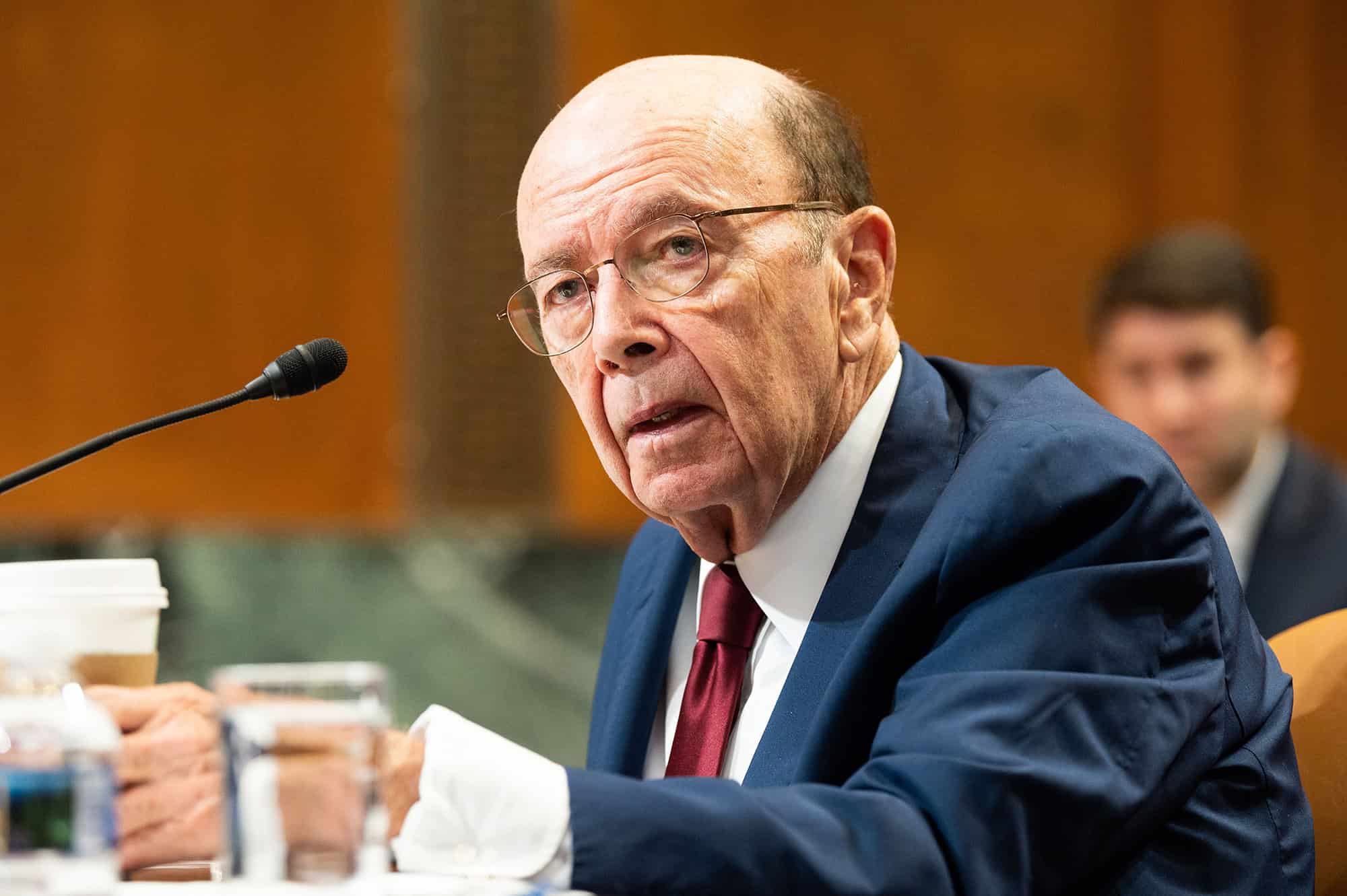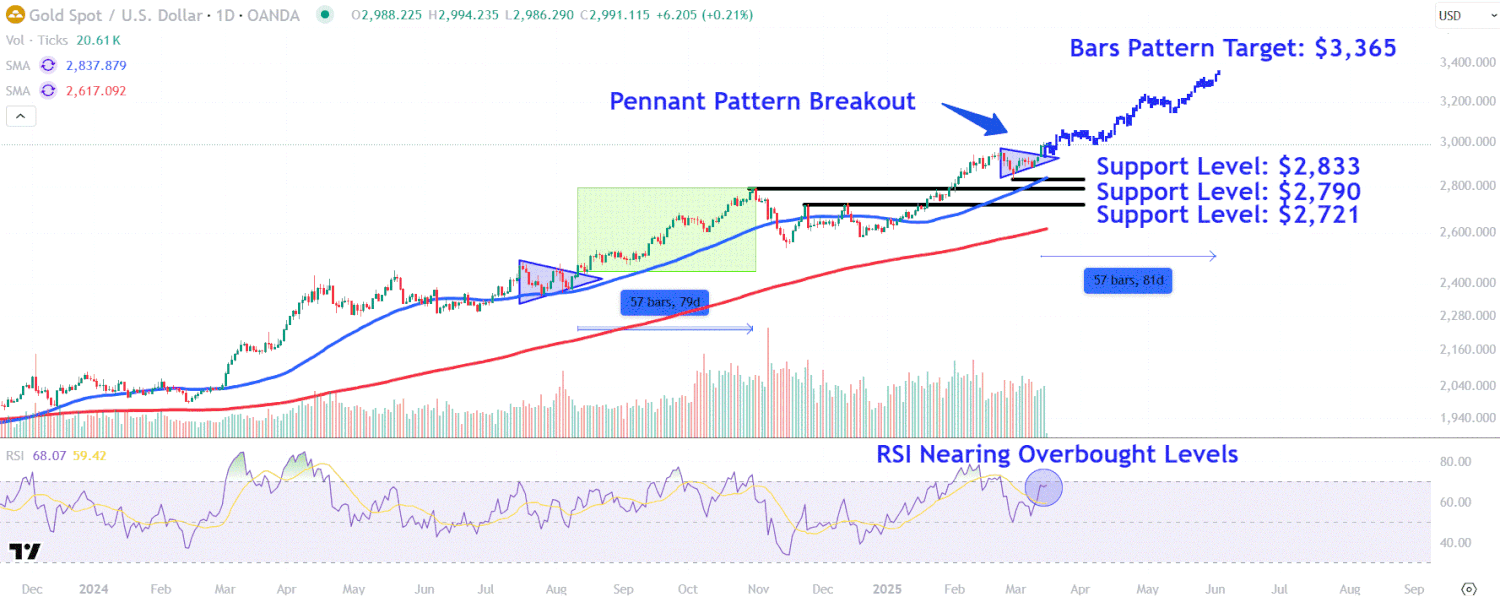The Danger that Could Derail Our Economy

Earnings forecasts are robust, but are there blind spots? … low-income homeowners are on shaky ground … mounting delinquencies … tariffs are the wildcard
As we noted in last Friday’s Digest, our recently completed earnings season was strong, and earnings forecasts are robust.
Our economy appears to be in solid shape.
But as we’ve highlighted in numerous past Digests, we have a K-shaped economy. Higher-income Americans have done quite well in recent years as their assets float atop inflation. However, lower-income Americans have struggled to make ends meet as high prices continue to stretch budgets.
Do the struggles of lower-income Americans signal cracks in our economy that aren’t fully represented in robust earnings forecasts?
Let’s begin by looking at the housing sector.
Low-income homeowners are on shaky ground
In 2013, as part of the broader Ability-to-Repay (ATR) requirements of the Dodd-Frank Wall Street Reform and Consumer Protection Act, lenders targeted a debt-to-income (DTI) ratio threshold of 43% when evaluating qualifying borrowers.
A DTI above 43% was seen as increasingly risky since those borrowers have a harder time making payments if financial stress increases.
However, this underwriting standard loosened for loans eligible for purchase by government-sponsored enterprises like Fannie Mae and Freddie Mac. Unfortunately, this paved the way for a marked ramp-up in risky loans.
Here’s The Wall Street Journal:
In 2007, 35% of new FHA [Federal Housing Administration] borrowers had debt-to-income ratios above 43%.
By 2020, 54% did.
As housing prices and inflation surged, borrowers became more stretched.
The FHA kept insuring mortgages to borrowers who were increasingly leveraged. About 64% of FHA borrowers last year exceeded the 43% threshold.
The FHA loan portfolio is far riskier than it was before the 2008 housing crisis.
The WSJ article highlights American Enterprise Institute analysis that estimates that 79% of FHA first-time borrowers have one month or less in financial reserves. Given today’s inflation-elevated prices, this leaves little-to-no financial cushion for many of these borrowers to make their mortgage payments if household expenses rise.
Back to the WSJ:
No surprise, many are missing payments, especially recent borrowers.
About 7.05% of FHA mortgages issued last year went seriously delinquent—90 or more days past when a payment is due—within 12 months. That’s more than at the 2008 peak of the subprime bubble (7.02%).
According to the Mortgage Bankers Association, while the “seriously delinquent” rate for conventional loans climbed just 2 basis points over the year ending in Q4 2024, the “seriously delinquent” rate for FHA and VA loans exploded 70 basis points.
In February, the Intercontinental Exchange monthly report on the housing market concluded that FHA and Veterans Affairs loans delinquencies are “likely to serve as canaries in the coal mine for mortgage performance in this cycle.”
So, why haven’t these delinquencies been a major problem so far?
The WSJ has an answer:
Under the guise of Covid relief, the Biden administration masked the growing troubles in the housing market by paying off borrowers and mortgage servicers to prevent foreclosures.
Of the 52,531 FHA loans last year that went seriously delinquent within their first year, only nine resulted in foreclosure.
The FHA instituted a program that pays mortgage servicers to make borrowers’ missed payments for them. Missed payments are added to the loan’s principal, but without interest…
One result is that many FHA borrowers owe more than their original mortgage and more than their homes are worth. They are essentially trapped in their homes even if they want to sell and move…
Another result is that home prices keep increasing because borrowers who don’t pay their mortgages—and never should have qualified for loans—can’t get foreclosed on or be forced to sell their homes.
Without these protective policies in place, we’d likely be seeing significantly more delinquencies, and potentially, foreclosures. Instead, these policies have masked growing weakness in this part of our K-shaped economy.
But we are seeing evidence of this weakness in many other areas.
Growing pain points for millions of Americans
Millions of Americans are having increasing trouble making their payments on…well, just about everything.
In March of 2020, President Trump initiated a student loan repayment pause under the CARES Act due to Covid-19.
President Biden extended that pause several times, even attempting to implement several initiatives aimed at reducing or eliminating many student loans. Altogether, his efforts targeted roughly 4.3 million borrowers with a loan amount of approximately $153 billion.
Most of those loan cancellations were struck down by the Supreme Court. And with the pause in student loans having ended last September, delinquency payments are back on the rise.
From Forbes, two weeks ago:
After the three-year pandemic pause and resumption of federal student loan repayments, delinquency rates have doubled in just a few months, according to Education Department data obtained by The Washington Post.
Millions of borrowers are struggling to keep up with their monthly bills now that payments are required again.
Roughly four million federal student loan borrowers are already behind on payments, a sharp spike in distress that has alarmed policymakers and advocates.
Meanwhile, car loan delinquencies are rising.
Here’s Axios from January:
Americans are missing their car payments at the highest rate in decades, according to Fitch Ratings data…
Car costs, including loans and insurance, have soared in an economy where consumers are showing mounting signs of stress.
6.6% of subprime auto borrowers were at least 60 days past due on their loans as of January 2025.
This is the highest level since the agency began collecting data. The fall and winter of 2024 saw the next highest subprime delinquency rates.
Credit card delinquency rates are up too.
Here’s PYMNTS, last month:
Consumers loaded up on their credit cards in the fourth quarter of the year – which encompassed the holiday shopping season lasting through November and December.
Card balances surged by $45 billion, even while delinquency rates are, per the Fed’s language, “elevated” …
We haven’t seen these levels of delinquency in years — and in fact, not since the fourth quarter of 2011.
Let’s not forget home insurance premiums.
Insurance companies are getting hammered on claims as the last 12 months have brought a series of high-impact insurance events (hurricanes, floods, fires). And this means most homeowners are getting hammered on premiums – even if they don’t live in those high-impact areas.
Here’s CBC News:
The average homeowners insurance premium jumped 33% from 2020 to 2023, rising from $1,902 per year to $2,530, according to 2024 research from economists at the University of Pennsylvania’s Wharton School and the University of Wisconsin. By comparison, inflation rose about 18% during that same time period…
Yet even property owners in states considered less vulnerable to climate disasters are now grappling with increased insurance costs and dropped policies — issues that threaten to undermine property values…
“One thing that is surprising is that Kansas and Nebraska and these places in the middle of the country are also seeing these huge increases in insurance.”
Bottom line: Altogether, lower-income Americans are feeling increased financial pressure. Have we captured this risk fully in our earnings projections?
Now, let’s add tens of thousands of Americans who are, or will be, out of jobs as DOGE trims the federal workforce
The good news is that the unemployment rate remains relatively low. The bad news is that employers aren’t eager to hire. Last December, a Bank of America analyst referred to today’s market situation as a “low-hire, low-fire environment.”
What’s going to happen when tens of thousands of now-fired federal workers enter this “low-hire” labor pool?
What are the knock-on effects for their mortgage payments… student loans… credit card bills… and overall monthly budgets?
The uncertainty of our escalating trade war
As we’ve been highlighting in today’s Digest, lower-income Americans are running out of room to absorb additional financial pressure. But it appears that’s what’s on the way with tariffs.
As I’ve noted before, if tariffs are a brief tool used to negotiate lower reciprocal tariffs from other nations, that’s one thing. But the longer that tariffs remain in effect (and/or the threat of tariffs), the greater the risk of meaningful economic damage.
We’re running long today, so I’ll let former President Ronald Reagan make this point.
From Reagan in 1987:
At first, when someone says “let’s impose tariffs on foreign imports, it looks like they’re doing the patriotic thing by protecting American products and jobs. And sometimes, for short while it works. But only for a short time…
High tariffs inevitably lead to retaliation by foreign countries and the triggering of fierce trade wars. The result is more and more tariffs. Higher and higher trade barriers and less and less competition.
Soon, because of the prices made artificially high by tariffs that subsidize inefficiency and poor management, people stop buying.
Then the worst happens.
Markets shrink and collapse, businesses and industries shut down, and millions of people lose their jobs…
Over the long run, [tariffs] hurt every American worker and consumer.
To be clear, we’re not predicting this grim outcome.
But the U.S. consumers in the lower half of our K-shaped economy are running out of financial breathing room. So, tariff-related economic damage doesn’t need to be severe to push these consumers over the proverbial cliff-edge, impacting corporate profits…our economy…and our portfolios.
For everyone’s sake, let’s hope we avoid this.
We’ll continue to monitor these developments in the Digest.
Shifting gears, a quick reminder before we sign off…
This Thursday is Nvidia’s “Quantum Day.” It’s going to bring together industry leaders, developers, and partners to explore the future of quantum computing.
Legendary investor Louis Navellier believes Nvidia will also announce a big move into quantum computing – and potentially, a partnership with one specific small-cap quantum company. If this happens, Louis believes that this company’s small-cap stock has 50X-return potential.
Last week, Louis held a live event to fill in the details. If you missed it, you can catch the free replay right here.
From Louis:
This Thursday,I believe Nvidia will stake its claim in the quantum computing space. And when it does, this little-known top pick could erupt overnight.
Last week, I revealed everything you need to know about Q-Day – including details on my No. 1 stock pick that could explode in the wake of NVIDIA’s announcement.
I’m telling folks about it before Nvidia’s Q-Day on March 20.
My goal for this briefing is to get you AHEAD of the crowd… AHEAD of the news outlets…
Here’s the link again for Louis free briefing.
Have a good evening,
Jeff Remsburg


























